Menus
- Sports boxer at the Hockenheimring
- 594 stayed in the R 50 chassis
- BMW R 69 S was shut down in 1979
- Temperament and smoothness of the engine
- Rear suspension with tight travel
- Data and successes of the BMW R 69 S
- The successes
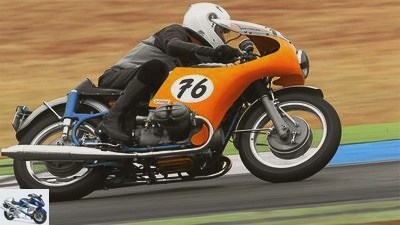
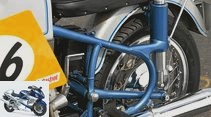
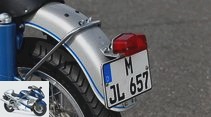
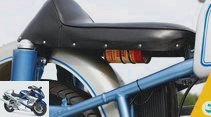
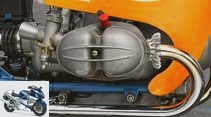
23 photos
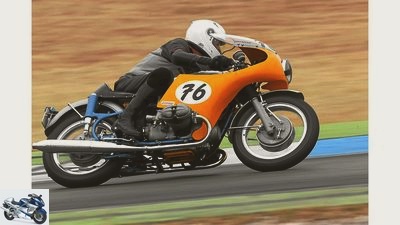
1/23
Author Ralf Schneider out and about on the Dahne BMW.
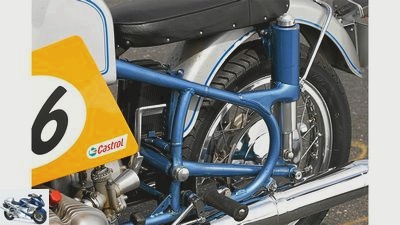
2/23
The double loop frame made of steel tubes has a swing arm with straight suspension at the rear.
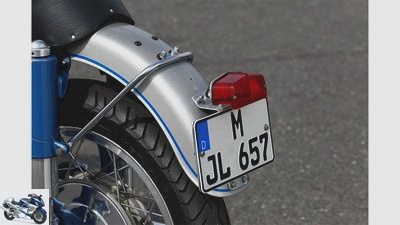
3/23
The wire spoke wheels with aluminum rims take tires of sizes 100 / 90-18 (front) or 110 / 90-18 (rear).
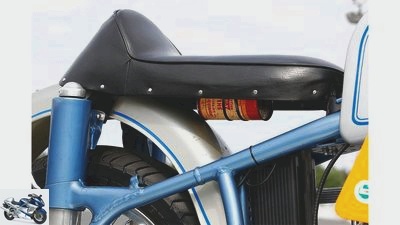
4/23
A can of engine oil under the seat.
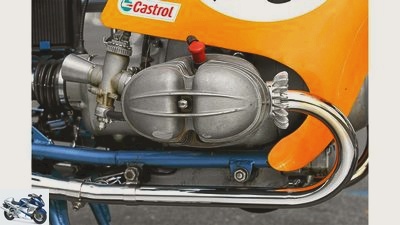
5/23
Right cylinder of the boxer engine.
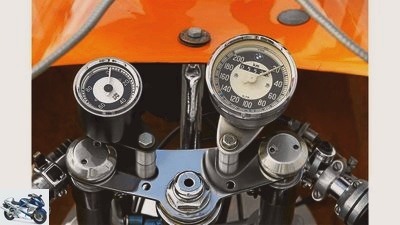
6/23
Purism and care are not only evident in the instruments …
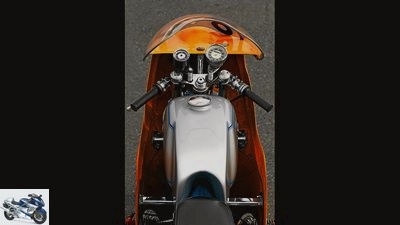
7/23
The entire driver’s perspective reveals how the Dahne-BMW was built: light and low, it favors a quiet type of speeding.
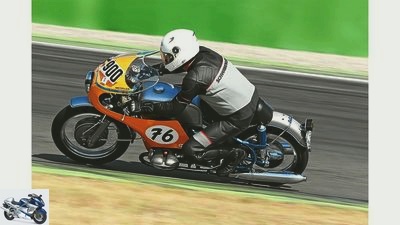
8/23
Dahne-BMW R 69 S..

9/23
Dahne-BMW R 69 S..
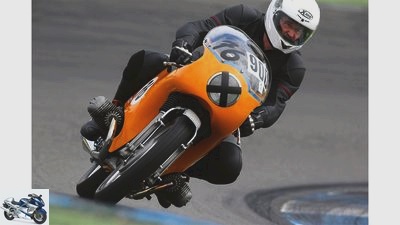
10/23
Dahne-BMW R 69 S..
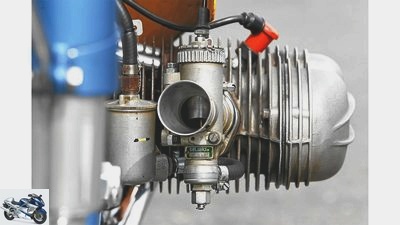
11/23
… approx. 41 kW (56 PS) of power.

12/23
This has 594 cm³ displacement and thus delivers …
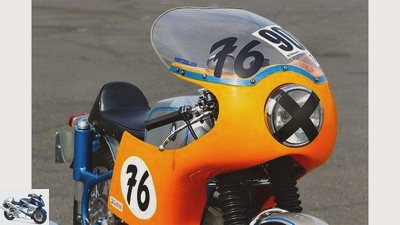
13/23
In addition to the aerodynamics, the longitudinally installed, air-cooled two-cylinder four-stroke boxer engine is also responsible for the driving dynamics.

14/23
Helmut Dahne has every reason to be delighted with his early racing BMW.
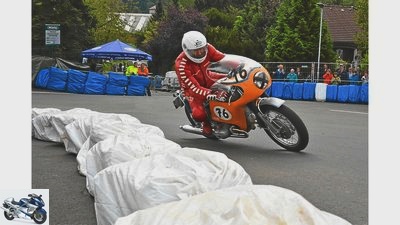
15/23
Dahneception: Helmut Dahne on the Dahne-BMW – but not in Denmark.
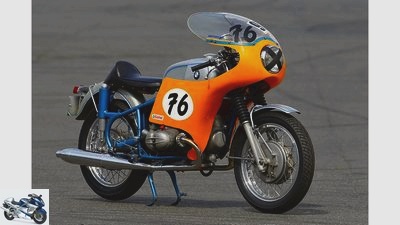
16/23
Dahne-BMW R 69 S..
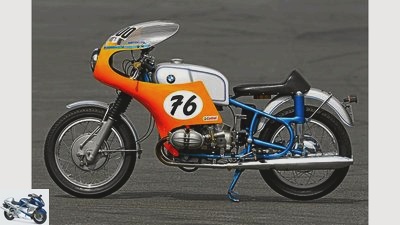
17/23
Dahne-BMW R 69 S..
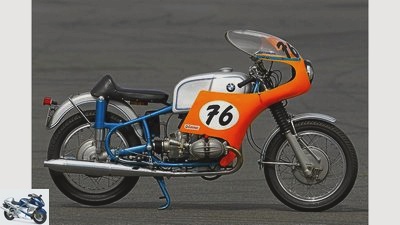
18/23
Dahne-BMW R 69 S..
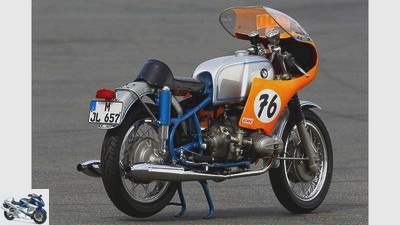
19/23
Dahne-BMW R 69 S..
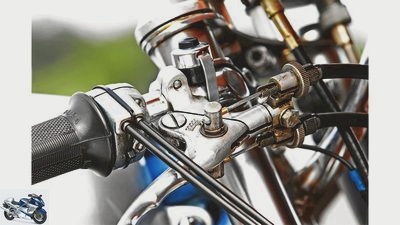
20/23
Even today, the builder raves about the craftsmanship of the BMW mechanics, who give him parts such as the double brake cable routing …
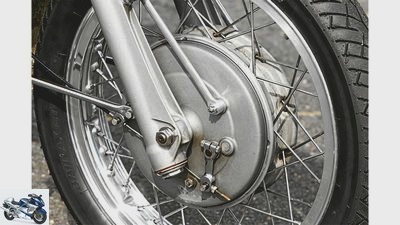
21/23
… or the special brake drum helped.
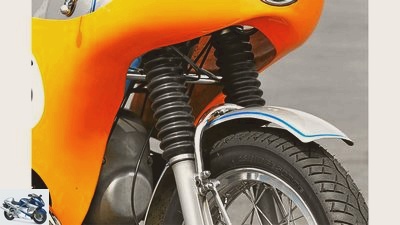
22/23
This light flag from a front wheel guard"sheet" was laminated in the rear fender, which served as a negative mold.
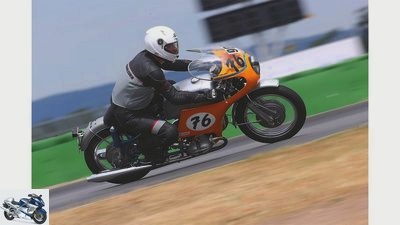
23/23
Dahne-BMW R 69 S..
BMW R 69 S from Helmut Dahne
Sports boxer at the Hockenheimring
Content of
As a mechanic in BMW’s development department, the young racing driver Helmut Dahne built his first boxer racing motorcycle from the mid-1960s. MOTORRAD Classic was able to drive the well-preserved BMW R 69 S in Hockenheim.
F.For one day I was a traveler between times. Drive an HPS-Honda Fireblade with 204 hp for 20 minutes, take a short break, change clothes, then get on the BMW R 69 S racing machine to drive it over the big circuit in Hockenheim. And all over again. This change between different epochs proved to be a challenge and was enormously instructive. Because in the extreme contrast between the two motorcycles, their characters emerged particularly clearly, along with their effects on driving dynamics and driving style.
Buy complete article
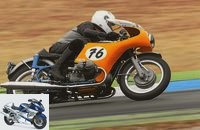
BMW R 69 S from Helmut Dahne
Sports boxer at the Hockenheimring
R 69 S simply in terms of performance. Which doesn’t mean it’s slow. At least I’m not the slowest in the Motodrom with her, and she allows me to have precise, elegant lines. Because of the lower speed differences over the course of a lap and because the narrow tires require less lean angle, driving is by no means as strenuous as on a modern motorcycle. This reinforces the impression of a harmonious connection between driver and machine.
594 stayed in the R 50 chassis
The blue-orange veteran, originally built as the R 50 S in the early 1960s, is the less well-known one of Helmut Dahne’s racing BMW. It is not less important because it accompanied his entry into racing. Its gradual transformation began in the middle of the decade; for the 1967 season, Helmut Dahne converted the engine to the version of the BMW R 69 S. In 1968 it ran on the test drive on the Solitude with a telescopic fork instead of the front swing arm, and the following year it was fully faired on the reliability drive on the Schottenring.
In the first half of the 1970s season, the machine experienced a true motor juggling experience: for reliability rides it kept the slightly reamed (second oversize) 594 engine of the BMW R 69 S, for B license races in the 500 series it was replaced with a 500 prototype engine planted with roller tappets. The young driver Dahne received it from BMW development manager Hans-Gunther von der Marwitz. In the second half of the season, a prototype chassis from the R 75/5 development for the 500 was added, the 594 remained in the R 50 chassis.
BMW R 69 S was shut down in 1979
In 1971, Helmut Dahne sold the motorcycle to a gentleman in his neighborhood who resold it to a member of the US armed forces, Myles, with the last name. This epoch is the dark phase in the history of the racing machine; What Mr. Myles did with the BMW R 69 S is not known. When he was ordered back to his homeland, he exchanged it with the well-known BMW team racing driver Heinz Luthringshauser for a Megola, which he took with him to the States. The BMW, in turn, went to collector Heiner Seibert from Worms in spring 1979, suffered a gearbox damage and was shut down in autumn that year. Around 2002 Heiner Seibert swapped the R 69 S for a 1934 Lanz Bulldog, and it has belonged to Klaus Weidmann ever since. He repaired the gearbox and the GRP tank that had leaked from a fall and was the only part that had to be repainted. And because he was there before, he changed a few seals, the cables and oil fillings, in short, he gave the BMW all the care that it had missed for many years. When she drives, which happens regularly, she is moved quickly; when she does not drive, she is lovingly received. Heavenly conditions for an older motorcycle.
The BMW R 69 S thanks this at our rendezvous with always willing jumping and impeccable manners. As is typical for boxers, it shakes a little when warming up at low engine speeds, which have to be held with a careful hand on the throttle because the SSI carburetors from Dellorto do not have an idle system. The engine, built with the greatest care, runs mechanically very smoothly, but thunders sonorously from the shapely exhausts, which are apparently equipped with rather airy damper elements. So at least you have something to hear when you drive out at half throttle through the fast Parabolika to the hairpin.
Temperament and smoothness of the engine
Yes, half throttle. The translation of the BMW R 69 S is too short for full throttle in this passage. In order not to spin the engine to death, I stand up from the fairing and drive at half throttle on the far left at the edge of the track so that the others can overtake undisturbed. I can only really drive them around in front of me after the hairpin. On the second turn, Klaus gives me 8500 rpm for the parabolic steroids. The old boxer delivers them with enthusiasm, and that in turn excites me. On the dynamometer, the engine would probably deliver peak power in the tenth of a second before it crashed, in my estimate well over 60 hp. There is no noticeable decrease up to 8500 rpm; the engine would probably continue to gain further above 9000 rpm. But what’s the use if it can’t mechanically survive the engine speed at maximum power??
Because of its temperament and smooth running, the engine deserves a more detailed description. As far as special parts are concerned, it is not as far removed from the series as the previous description suggests: Sports camshaft and the aforementioned Dellorto carburettors, that’s it. For this, the preparation and assembly of the series parts was carried out with infinite care. Helmut Dahne selected the needles for the connecting rod bearings from an assortment graduated in thousandths of a millimeter, meticulously aligned the finished crankshaft with concentricity and “made the channels really nice” by hand, as he himself describes. His success proves him right: since assembly in 1967, the housing with the crank mechanism on roller bearings no longer had to be opened. It actually comes from the series that was particularly noticeable in the first half of the 60s due to numerous engine damage. Because it could hardly withstand its high rated speed of 7650 rpm, the R 50 S had only been produced for two years.
There is one point, as Helmut Dahne learned from his engine, that taking great care does not help. He had meticulously adjusted the connecting rod and piston to the same weight, believing that he had created an important factor for the excellent smoothness. One day when he was on his way to the Isle of Man by axle, the right cylinder tore off. A test driver brought replacements, but only had standard instead of oversized parts available. Dahne had to install them in order to find out that the boxer of the BMW R 69 S with the different individual cubic capacities ran just as cultivated as before.
Rear suspension with tight travel
A similarly fine part as the engine, trained to be extremely sensitive, is the fork. It comes from the series that was built into the US export models of the BMW R 69 S at the end of the 1960s, while this model was still produced in Europe with a front swing arm. And she does her job very well. Far better than the rear wheel suspension, whose short spring travel places tight limits on it. This is especially noticeable when accelerating out of the depression of the Hockenheimer Motodrom, when there is a lack of rebound travel on the small hilltop and the whole motorcycle is being vigorously stirred from back to front. Such peculiarities document the state of the art at the time of its creation as well as the once again not very accommodating gear.
Although it is also a distant past, the double-duplex drum brake in the front wheel stands out better. Wait a minute, connoisseurs will say, you can see standard BMW parts and those were just duplex brakes. But it’s true. Following the example of Ferdinand Kaczor, Helmut Dahne divided two standard duplex drums vertically, welded the two right halves back together and shrunk a brake ring 15 millimeters wider. The double duplex brake created in this way bites moderately at the beginning, but becomes more and more crisp as the temperature increases. In the course of long braking maneuvers, it is even advisable to be very careful when metering. Early disc brakes on production motorcycles weren’t nearly as snappy. But it is the same with the drum brake as it is with the whole motorcycle: in the early 70s they were in the final stages of their development potential. The new one wasn’t much better at first, but it offered a lot more potential.
Data and successes of the BMW R 69 S




23 photos
Images: BMW R 69 S by Helmut Dahne
To home page
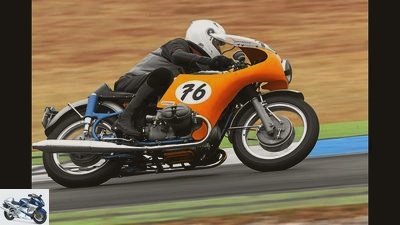
markus-jahn.com
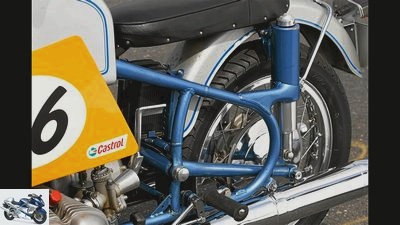
fact
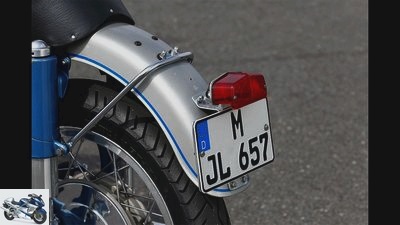
fact
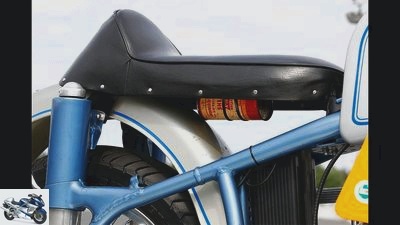
fact
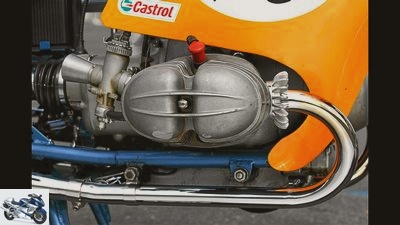
fact
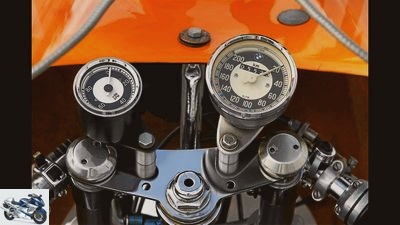
fact
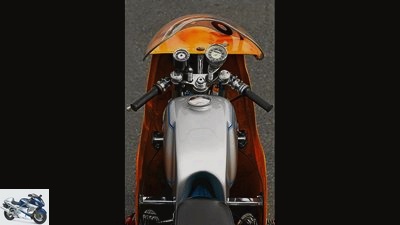
fact

markus-jahn.com
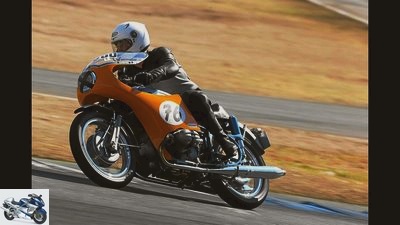
markus-jahn.com
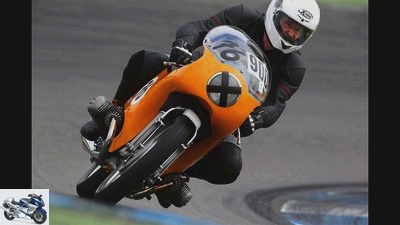
markus-jahn.com
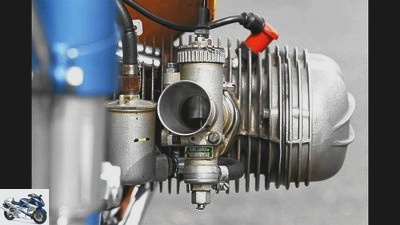
fact
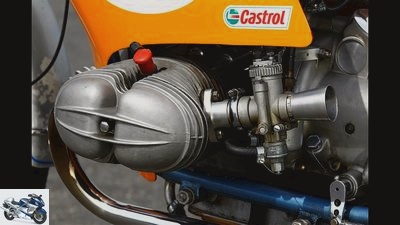
fact
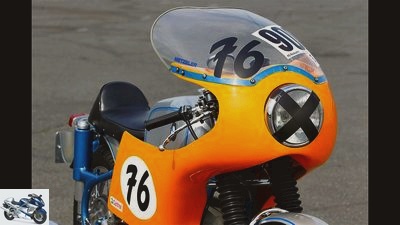
fact
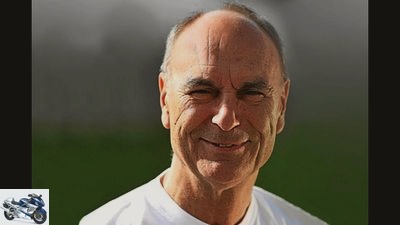
markus-jahn.com
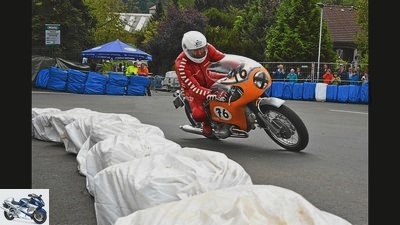
markus-jahn.com
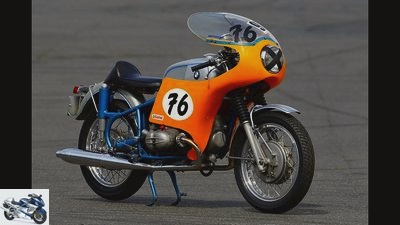
fact
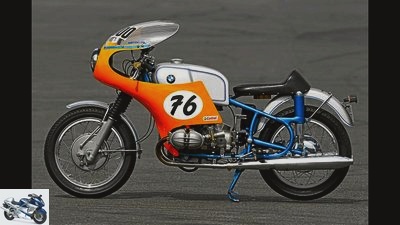
fact

fact
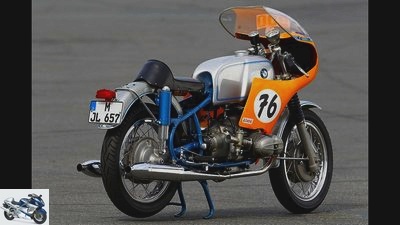
fact
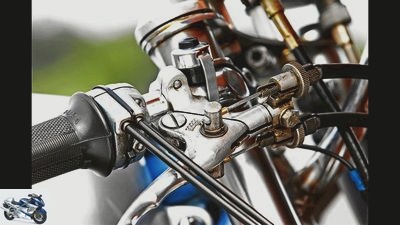
fact
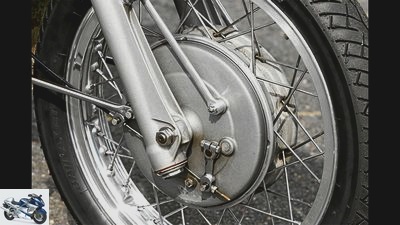
fact
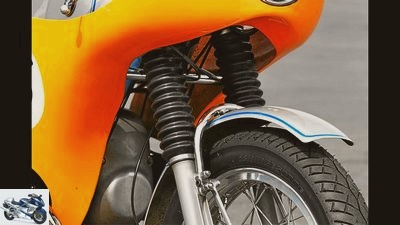
fact
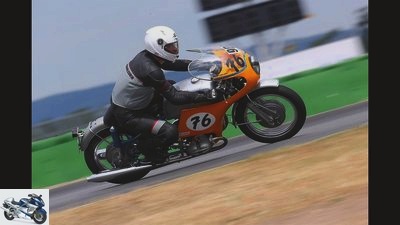
markus-jahn.com
Technical specifications
Engine: Air-cooled two-cylinder four-stroke boxer engine, installed lengthways, a spur gear-driven, lower camshaft, two valves per combustion chamber, operated via bumpers and rocker arms, bore x stroke 72 x 73 mm, displacement 594 cm³, output approx. 41 kW (56 PS)
Power transmission: Single-disc dry clutch, four-speed gearbox, cardan drive
Landing gear: Double loop frame made of steel tubes, hydraulically damped telescopic fork at the front, swing arm with straight-line suspension at the rear, wire-spoke wheels with aluminum rims, front tires 100 / 90-18, rear 110 / 90-18, double duplex drum brake at the front, simplex drum brake at the rear, diameter 200 mm
Mass and weight: Wheelbase 1415 mm
Mileage: Top speed around 190 km / h
The successes
Between May 1968 and October 1970 Helmut Dahne contested six reliability drives, four mountain races and three circuit races with the motorcycle from this story. He achieved seven first places, one second place and two third places. Another victory would have been possible at Solitude-Zuvi 1968. Dahne drove the fastest special stage on the BMW R 69 S, but made a mistake while stamping and received a penalty minute. With a 500cc boxer in the same chassis, he won his first hill climb on Sudelfeld in 1968. In 1970 he achieved a series of three victories in hill climbs in Schotten, Rotenburg and on Ellerberg with this combination. Shortly afterwards the engine found a new home in a prototype frame from the R 75 development. Helmut Dahne last drove the R 69 S in Schotten in 2014.
Related articles
-
On the move with six motorcycle icons of the 70s
fact 33 photos fact 1/33 Wobble candidate: In windy conditions, working with such a large brightener is not entirely without it. fact 2/33 Six correct…
-
fact 12th photos fact 1/12 Top brakes: radially screwed six-piston stoppers, ABS and integral actuation. fact 2/12 Builds compact and very narrow: the…
-
Yamaha XJ 650, XJ 650 Turbo and XJ 900 F in comparison test
Bilski comparison test Yamaha XJ 650 / XJ 650 Turbo / XJ 900 F four-cylinder Yamahas in comparison test Contents of Yamaha’s XJ series are still considered …
-
Jahn On the move: MV Agusta 600 4C Motorcycle from the world Content of Riding out on a touring motorcycle, driven by a four-cylinder with a…
-
Gargolov 32 pictures Gargolov 1/32 BMW R 32 and BMW R 1200 GS – BMW boxers then and now. Gargolov 2/32 BMW R 32 and BMW R 1200 GS – BMW boxers once and …
-
Comparison test of the sports tourers from BMW and Honda
fact 12 pictures fact 1/12 Top brakes: radially screwed six-piston stoppers, ABS and integral actuation. fact 2/12 Builds compact and very narrow: the …
-
On the move: 30 years of GS models from BMW
Frank Herzog 71 photos BMW 1/71 1985: Little Gaston Rahier fights his way through the desert again with his huge HPN boxer and can successfully defend…
-
On the move: BMW R 100 S, Honda CB 900 F Bol d’Or, Moto Guzzi Le Mans I.
fact On the move: big bikes from the 70s BMW R 100 S, Honda CB 900 F Bol d’Or, Moto Guzzi Le Mans I. Content of At the turn of the decade, MOTORRAD…
-
Honda CB 1100 R, Honda VF 1000 R in the test
Jahn 16 photos Jahn 1/16 Athletes in tails – a comparison of the two long-distance racers from the Honda brand. Jahn 2/16 A very fine detail borrowed…
-
On the road with the BMW K 75, Triumph Trident T150 and Yamaha XS 750
fact 34 photos www.factstudio.de 1/34 Picture gallery, On the move: BMW K 75, Triumph Trident T150, Yamaha XS 750. www.factstudio.de 2/34 If you are into…